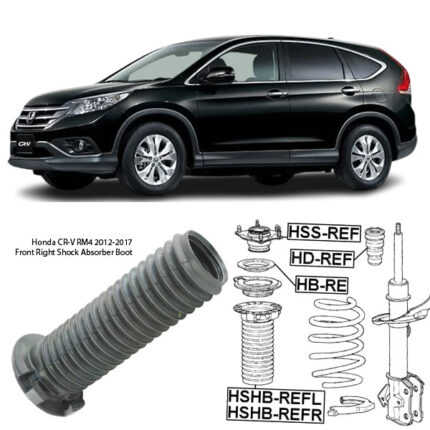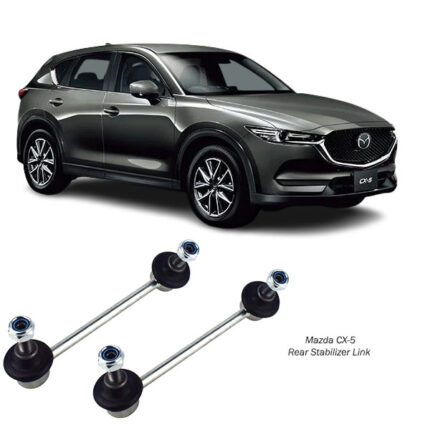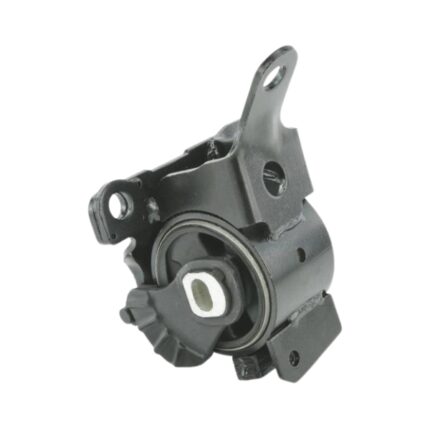Get Mazda 6 / CX-5 Left Engine Mount in Kenya
An engine mount, sometimes called a motor mount, is a vital component in a vehicle’s powertrain system. The left engine mount specifically refers to the mount located on the left side of the engine bay (from the driver’s seat perspective). While small in size, its role is essential—securing the engine in place, isolating vibrations, and ensuring smooth vehicle operation. Understanding the structure, function, and importance of the left engine mount highlights its critical contribution to engine performance, comfort, and overall driving safety.
Structure and Design
A typical left engine mount is carefully engineered to absorb forces and stabilize the engine. Its design includes several components working together:
-
Mounting Bracket – A solid metal frame, usually made from steel or aluminum, that connects directly to the vehicle’s chassis and engine block.
-
Rubber or Polyurethane Insulator – The cushioning element designed to absorb engine vibrations and shocks. Rubber is commonly used for its flexibility and damping ability, while polyurethane is favored in performance applications for its stiffness and durability.
-
Bolts and Fasteners – Strong hardware that secures the mount firmly in place, resisting the engine’s torque and motion.
-
Hydraulic or Fluid-Filled Chambers (in advanced mounts) – Some modern mounts incorporate hydraulic fluid or special gels to improve damping, especially at idle or during gear shifts.
Function of the Left Engine Mount
The left engine mount serves several critical functions in the vehicle:
-
Engine Positioning – It holds the engine securely in its designated position, preventing unwanted movement. Since the engine produces significant torque and vibration, the mount ensures that this energy is controlled and directed safely.
-
Vibration Damping – Without mounts, engine vibrations would transfer directly into the chassis and cabin, leading to an uncomfortable ride. The rubber or hydraulic core of the mount absorbs these vibrations, keeping the cabin quiet and stable.
-
Shock Absorption – When the vehicle travels over rough terrain, bumps, or potholes, the mount absorbs some of the jolts, preventing direct stress transfer to the engine block.
-
Protection of Adjacent Components – A stable engine reduces strain on other connected systems such as the transmission, exhaust, hoses, and electrical wiring, increasing their longevity.
Types of Engine Mounts
While the left engine mount has the same basic role as mounts on other sides, its design may vary depending on vehicle type and manufacturer:
-
Conventional Rubber Mounts – Simple, durable, and cost-effective, commonly used in standard passenger vehicles.
-
Hydraulic Mounts – Filled with fluid for enhanced vibration damping, ideal for modern vehicles requiring higher comfort standards.
-
Active Engine Mounts – Equipped with electronic or vacuum controls, these adjust damping characteristics dynamically to suit different driving conditions.
-
Performance Polyurethane Mounts – Stiffer mounts designed for high-performance or off-road applications, reducing engine movement under high loads.
Importance of the Left Engine Mount
Although all mounts work together, the left engine mount often bears specific loads depending on the engine layout. For example, in transverse-mounted engines (common in front-wheel-drive vehicles), the left mount balances torque forces when the engine twists during acceleration. In longitudinal setups, it still plays a crucial role in maintaining engine balance.
If the left engine mount fails, the consequences can be severe:
-
Increased Vibrations – Passengers may feel excessive vibrations through the steering wheel, seats, and floor.
-
Engine Misalignment – Can lead to stress on axles, exhaust connections, and transmission.
-
Noise and Clunks – A failing mount often produces knocking sounds during acceleration, braking, or gear shifts.
-
Accelerated Wear of Other Components – Loose engine movement puts strain on belts, hoses, and wiring.
Signs of a Worn or Damaged Left Engine Mount
Drivers should monitor their vehicles for symptoms of a failing left engine mount:
-
Excessive engine vibration at idle.
-
Clunking or banging noises when shifting gears or accelerating.
-
Visible cracks or wear on the rubber portion of the mount.
-
Engine movement that can be felt when the hood is open and the throttle is applied.
-
Misalignment of engine components or strain on surrounding connections.
Early detection of these signs prevents further damage and costly repairs.
Material Considerations
The choice of materials in a left engine mount determines its durability and performance:
-
Rubber – Provides excellent vibration damping but may deteriorate faster under heat and oil exposure.
-
Polyurethane – More resistant to wear and chemicals, but transmits slightly more vibration into the cabin.
-
Hydraulic Fluids – Used in advanced mounts for smoother performance and noise reduction.
-
Metal Components – Usually steel or aluminum, chosen for strength, corrosion resistance, and lightweight properties.
Maintenance and Replacement
Engine mounts are not typically serviceable; when they fail, replacement is necessary. Replacement intervals vary but most mounts last 5 to 7 years, depending on driving conditions.
Steps for replacement generally include:
-
Supporting the engine with a jack or engine hoist.
-
Removing bolts securing the old mount.
-
Installing the new left engine mount with proper torque specifications.
-
Inspecting other mounts for wear, since they usually age together.
Advantages of High-Quality Left Engine Mounts
Investing in a reliable mount ensures:
-
Reduced vibrations for a smoother ride.
-
Longer lifespan of engine and transmission components.
-
Protection of delicate hoses, belts, and electrical wiring.
-
Quieter cabin and improved driving comfort.
-
Stable power delivery without engine shifting under load.
Environmental and Safety Considerations
Defective engine mounts can compromise not only comfort but also safety. An unstable engine could shift dangerously, interfering with steering, braking, or drivetrain alignment. Additionally, eco-conscious designs now aim to use recyclable rubber and metals, reducing waste when mounts are replaced.
Follow us on Facebook for more parts.




